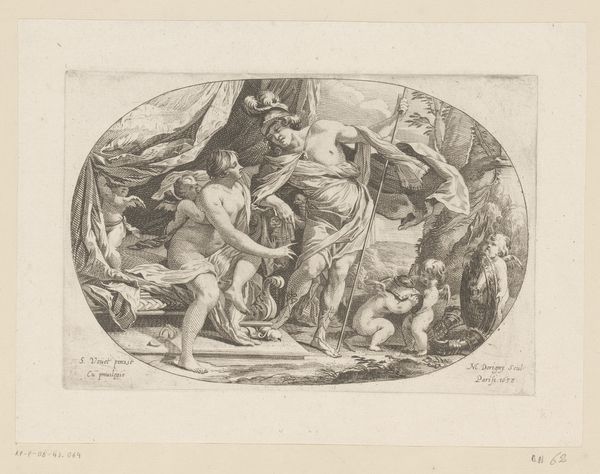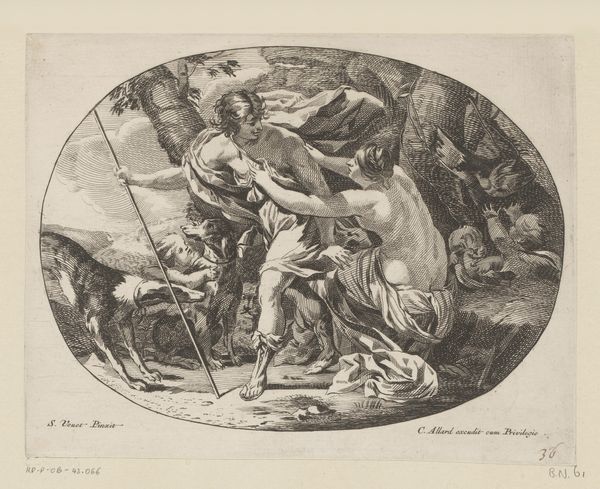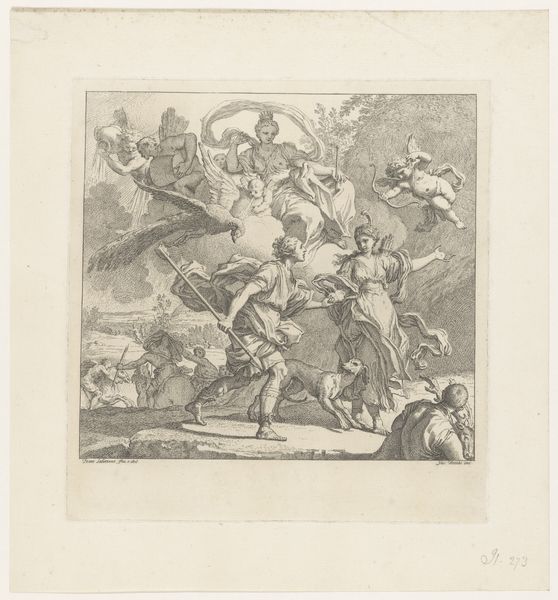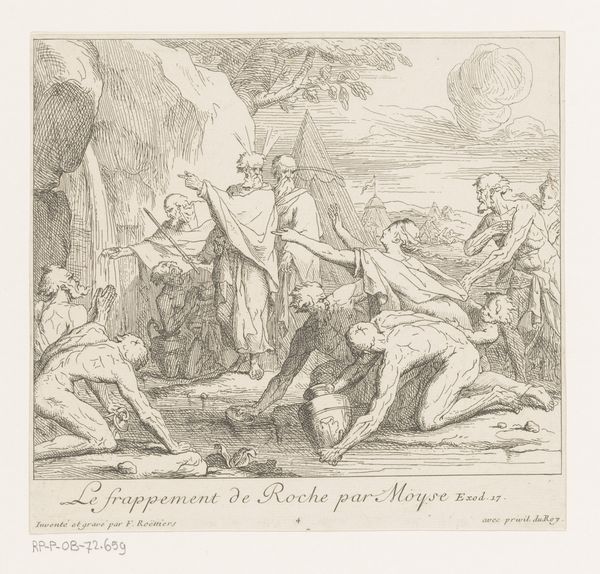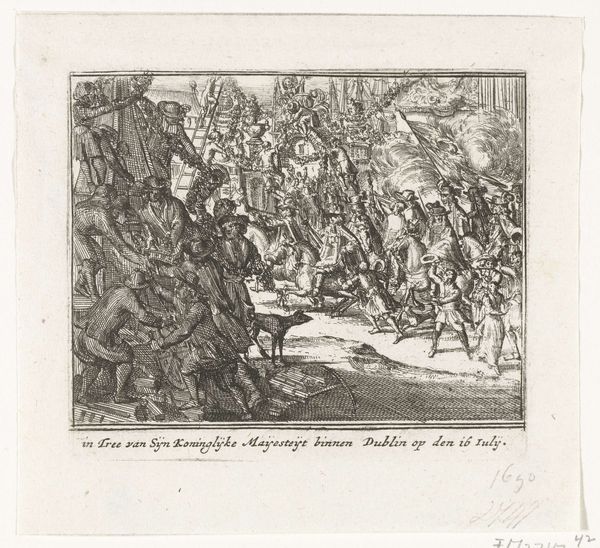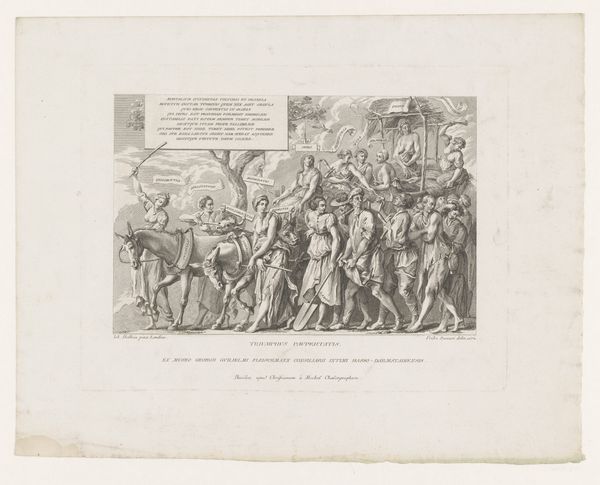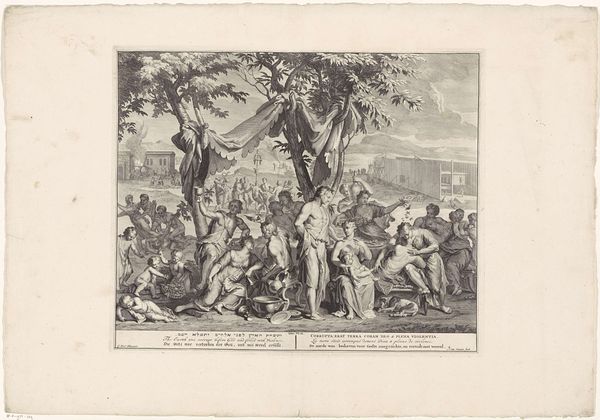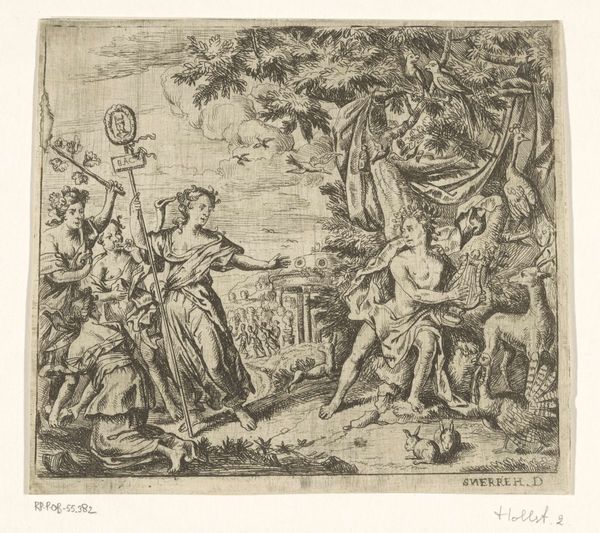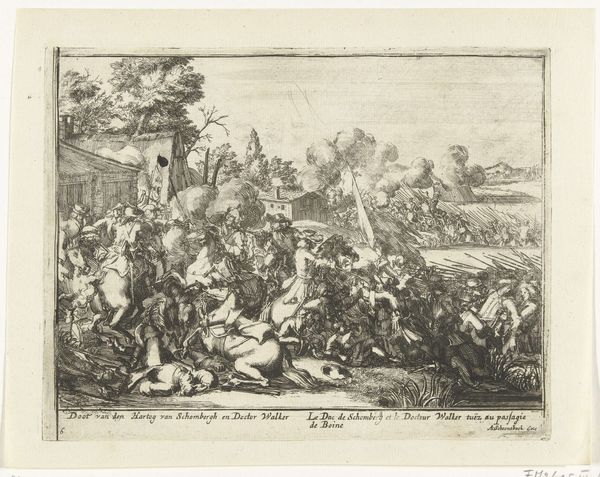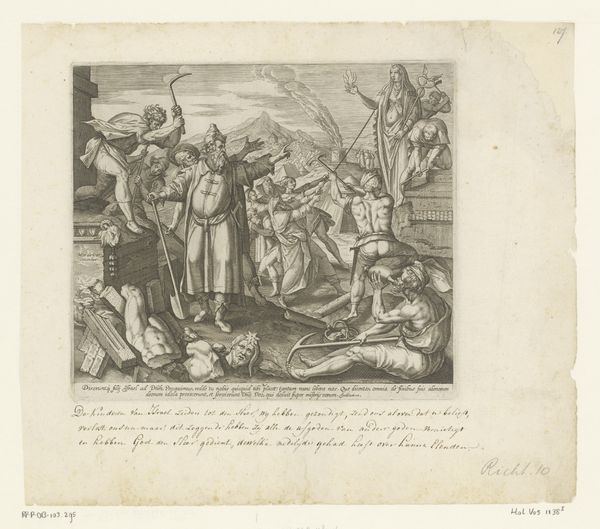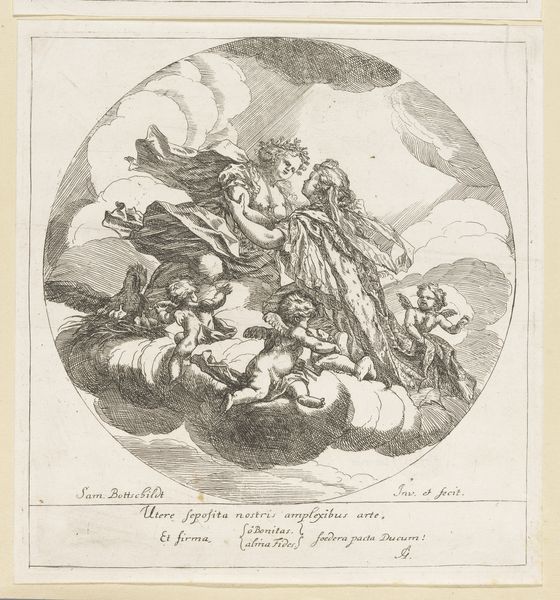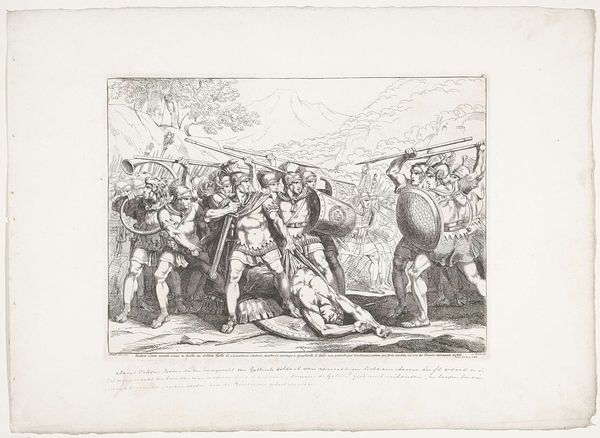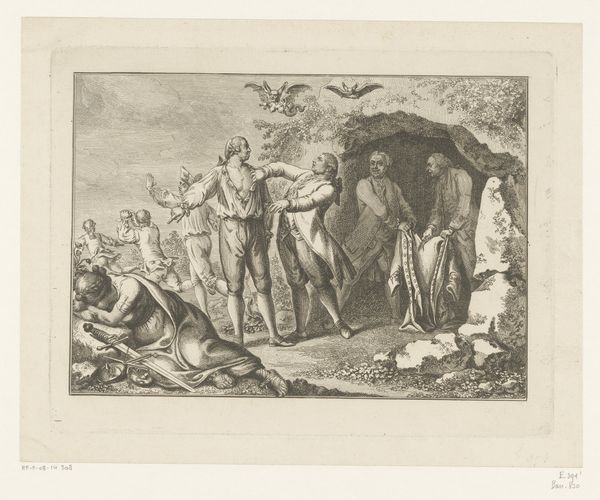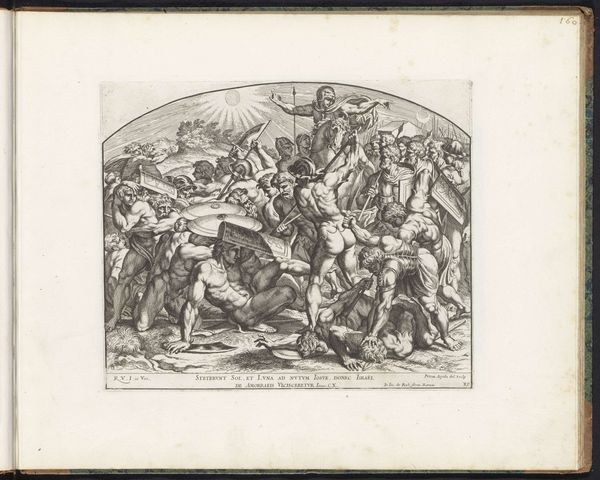
print, etching, engraving
#
allegory
#
baroque
# print
#
pen sketch
#
etching
#
figuration
#
mythology
#
history-painting
#
nude
#
engraving
Dimensions: height 160 mm, width 197 mm
Copyright: Rijks Museum: Open Domain
Curator: This engraving from the period of 1600 to 1650, held here at the Rijksmuseum, is called "Strijd tussen de Giganten en de Olympische goden," or "Battle between the Giants and the Olympian Gods." Editor: My first impression is one of dynamic chaos. It's as though the scene is about to explode off the surface of the print. The dense cross-hatching really gives it depth. Curator: The depiction of this mythological battle comes during a period when history painting was gaining importance in academic circles. Prints such as this played a vital role in circulating imagery and informing broader audiences about classical subjects, shaping cultural understanding and identity. Editor: Right, the material object. Consider the labor involved in creating this! The painstaking process of etching or engraving must have taken enormous amounts of time, requiring a high level of skill to transfer an epic scene into this small-scale format. Did these prints democratize the art or were they still destined for wealthy collectors? Curator: Both, perhaps? They served to educate a broader public and signal cultural capital and elevated taste. But the production of these prints relied on workshop systems, the division of labor shaping what we might call 'art.' Editor: Absolutely, and thinking about the paper, the ink... Were these materials sourced locally, or did they rely on a complex trade network? It affects our understanding of the print's inherent value and accessibility. The sheer density of line work would demand high-quality materials and skills. Curator: It is fascinating to think how seemingly distant mythological subject matter held contemporary significance, reinforcing political or social orders. And here, how did religious reformers and institutions of power see this classical revival? Editor: It is a whirlwind of bodies caught in conflict. To focus solely on iconography, on religious and state-sponsored interests can obscure the actual physical act of creation—and who exactly held the etching tools. Curator: It highlights how even reproductions contributed to debates on proper values. Editor: Yes, but in a way only a detailed assessment of technique and labor can expose. I keep thinking of how many impressions the printing plates made. Each pull fades until it vanishes—almost mirroring the stories that these prints illustrate.
Comments
No comments
Be the first to comment and join the conversation on the ultimate creative platform.
